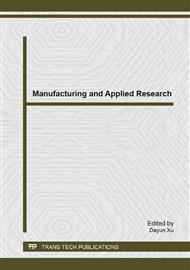p.121
p.127
p.135
p.141
p.148
p.154
p.160
p.166
p.170
The New Design Idea about Rock Direct Tensile Testing Machines Based on the Magnetic Levitation Principle
Abstract:
Direct tensile testing machines are the necessary to study tensile property of rocks. However, a traditional testing machine has the weakness of absenting effective subjacent brace. So, the whole tensile experiment can not be done completely. By using elastic brace, the whole tensile experiment really can be finished, then we can get the stress-strain curve. But, the samples are destroyed around incorrect planes. Aiming at the disadvantage of the machines, the author brings forward a new method of improving the direct tensile testing machine by using two magnets as the subjacent brace with magnetic levitation function. In this article, the author analyses the reasons why magnetic levitation can offer support and explains the components of the brace, its installation and principles. At last, the authors analyze the design idea and the technical effect of the brace.
Info:
Periodical:
Pages:
148-153
Citation:
Online since:
March 2014
Authors:
Keywords:
Price:
Сopyright:
© 2014 Trans Tech Publications Ltd. All Rights Reserved
Share:
Citation:


